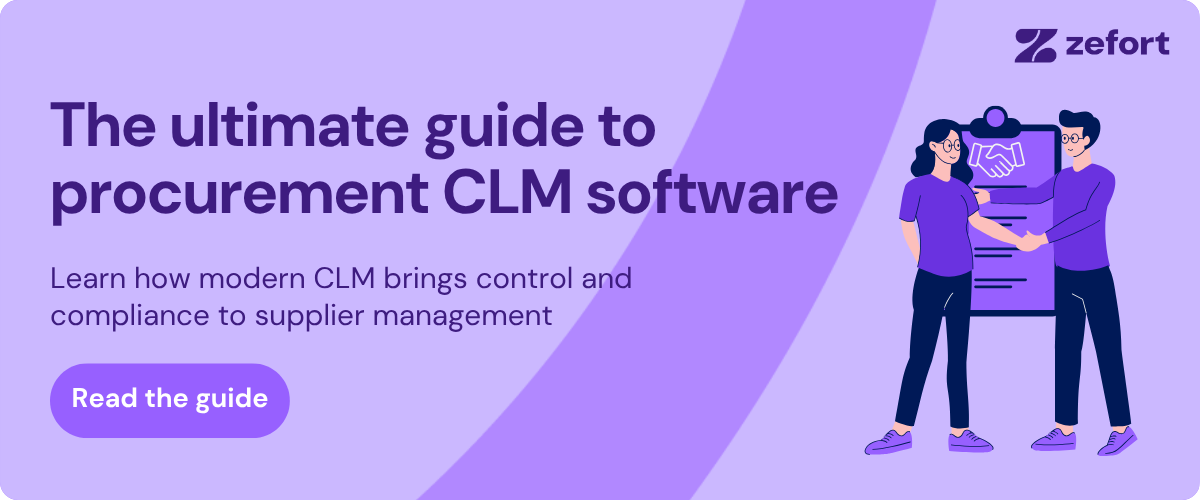5 ways to improve procurement contract management in 2026
Procurement leaders are entering 2026 with new expectations for efficiency, transparency and control. Supplier networks are expanding, regulations are tightening and internal stakeholders want real-time visibility into every agreement.
Yet many procurement teams still spend valuable time searching for documents, tracking renewals and managing compliance manually. Improving contract management is not about adding more tools – it’s about using the right practices to turn contracts into a reliable source of insight and control.
Here are five proven ways to strengthen procurement contract management for the year ahead.
1. Centralize all supplier contracts in one secure system
Visibility starts with consolidation. When contracts live across multiple folders, drives and inboxes, it’s impossible to know which version is final or who is responsible for it.
A centralized contract repository gives procurement, legal and finance one shared source of truth. It allows teams to search, organize and control access efficiently while keeping all supplier agreements compliant with company policy.
Modern systems like Zefort make this step fast to implement, ensuring that all procurement contracts are structured, searchable and secure from day one.
2. Automate renewals and key reminders
Missed renewals are among the most common reasons organizations lose money on supplier contracts. Manual tracking through spreadsheets or email alerts is unreliable – especially in large organizations with hundreds of vendors.
Automating renewal reminders and lifecycle milestones keeps procurement in control of every contract. Key dates such as renewals, terminations and performance reviews trigger timely notifications to the right stakeholders.
This proactive approach saves time and prevents costly surprises, while maintaining a full audit trail of actions.
3. Use digital forms to collect supplier information
Supplier compliance data, ESG declarations and due diligence forms are often handled through email exchanges and attachments. This creates a risk of missing or outdated information.
Zefort Forms allows procurement teams to create digital questionnaires for suppliers and store all responses automatically with the related contract. Each submission becomes part of the procurement record – signed, traceable and ready for audits.
This approach removes the need for manual follow-up and makes supplier audits quick and verifiable.
4. Leverage AI features for structure and insight
AI has become a practical part of modern contract management. Instead of manually entering details, procurement teams can use AI features to identify suppliers, values, renewal dates and obligations automatically.
These insights are stored as data, giving instant visibility into supplier portfolios and enabling better reporting. AI helps procurement focus on decisions rather than administration – improving accuracy and saving hours of manual work each week.
When combined with smart search and automated reminders, AI transforms contracts from static documents into structured, actionable data.
5. Build compliance into every step
Compliance should not be an afterthought. Procurement teams can ensure audit readiness by embedding documentation, approval and access control into their daily workflows.
A system with audit trails, standardized approval workflows and secure user management creates consistent governance without extra effort.
Procurement can demonstrate compliance with frameworks such as NIS2 instantly – all documentation already lives in the system, ready for inspection.
Zefort provides these capabilities natively: centralized storage, AI-assisted organization, digital supplier forms and complete audit trails. Together, they create a compliant, transparent and efficient procurement process.
Read next: Procurement contract management software: The ultimate guide
To dive deeper into the strategies, workflows and technologies shaping procurement in 2026, read Procurement contract management software: The ultimate guide – a comprehensive overview that connects visibility, automation and compliance into one practical framework.
FAQs
What is the most effective way to improve procurement contract management in 2026?
Start by centralizing all supplier contracts in a single, secure system that includes automation, reminders and compliance features. This provides visibility and reduces manual effort.
How does AI improve procurement contract management?
AI helps identify key contract details, create custom metadata and automate reminders, enabling faster insights and fewer manual tasks.
Why are digital forms important for supplier management?
Digital forms, such as Zefort Forms, standardize how supplier data and compliance information are collected, ensuring that all documentation is traceable and audit-ready.
What compliance standards should procurement follow?
ISO 27001 and the EU’s NIS2 directive are key frameworks for data security and governance in procurement contract management.
How can procurement teams ensure ongoing compliance?
By using a contract management platform with built-in audit trails, secure access controls and automated workflows that record every action.
🔑 Key takeaways
- Procurement efficiency in 2026 depends on centralization, automation and compliance.
- AI and digital forms reduce manual work and improve data quality.
- Renewal tracking and supplier audits can be fully automated with modern tools.
- Zefort helps procurement teams combine governance and agility in one secure platform.
All-in-one CLM software
Manage and automate contracts effortlessly.
All-in-one CLM platform
Manage and automate contracts effortlessly.





